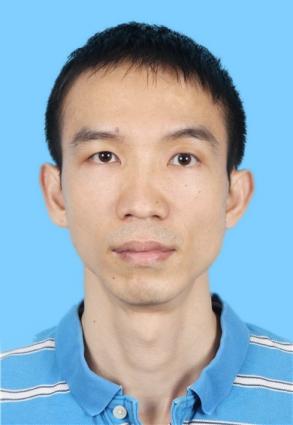Xiaobao Yang
South China University of Technology
Abstract: In this talk, we will show the theoretical investigation of multicomponet materials, including the first principle method, modeling potential, and global optimization. We focus on the structural search of special materials, such as diamond nanocrystal, metallic alloys, doped C60 , boron monolayers with various distribution of vacancy, etc. In these cases, atoms are located near a specific lattice, and the initial distribution is most important. We have developed a high throughput first-principles calculation program: Structure of Alloys Generation And Recognition (SAGAR) based on structure recognition, which can avoid repeated structure and ensure sample diversity. Then, we will establish the relationship of energy and property with the structures, adopting Monte-Carlo tree search scheme to search stable structures, achieving the performance-oriented material design.
1) Boron nanostructures
Similar to the "alloy" structure formed by boron atom and vacancy, we have determined the stable boron cluster with various sizes, as well as the evolution of boron monolayers on different substrates. We predicted a series of boron planar single-layer structures with semiconductor characteristics, proposing a theoretical model based on 8-electron and three-center bond to explain the charge distribution of the stable structures.

2) Global optimization and material design based on structure recognition
For doped C60, we determined the stable structures of different number of boron and nitrogen atoms; for the graphene-nanoflakes, we proposed an effective model to describe the electronic properties of the system, realized the material design based on performance. For the multi-component alloy structure, we propose an atomic classification method according to the bonding environment, which can both fit the structural stabilities and electronic properties of the system, predicting the band structures (BCN system) corresponding to different atom distribution, and designing the semiconductor material with direct band gap or specific band gap value.



多组元材料的理论建模和结构设计
杨小宝
华南理工大学
摘要:在本报告中,我们通过两个方面讲述理论计算(包括第一原理方法、建立模型势、结构搜索等)在合金材料研究中的应用。我们关注的是特殊问题的结构搜索,比如金刚石量子点、合金结构、C60上的替换、硼平面结构中空位的分布等, 原子基本在特定的晶格附近,而初始的分布是关键。我们开发了基于结构识别的高通量第一原理计算程序Structures of Alloys Generation And Recognition (SAGAR),在遍历计算中避免重复结构,保证样本多样性;建立体系能量和性质与子结构的关系,采取蒙特卡洛树搜索方案,有效解决结构搜索问题,实现以性能为导向的材料设计。
1)硼纳米体系的研究。
稳定的硼平面纳米结构是三角晶格碎片加上合适比例的空位,对应的是硼原子和空位形成的“合金”结构,我们确定了不同尺寸下稳定的硼团簇结构,并讨论了在不同衬底下硼平面结构的演化,预测了一系列具有半导体特性的硼平面单层结构,为硼纳米结构研究提供新的思路,有可能使其成为媲美石墨烯的新型材料。我们提出了基于8电子和三中心键的理论模型,解释了稳定结构的电荷分布,并给出了可能稳定结构需要满足的特征。
2)基于结构识别的全局搜索和材料设计的方案。
对于碳族相关体系,我们确定了不同数目硼、氮原子在富勒烯体系上替换掺杂的稳定结构;对于石墨烯团簇,提出了有效描述体系电子性质的模型,实现了基于性能的结构搜索,并将该方法推广到其他相关体系。对于多组元类合金结构,我们提出了根据成键环境对应的分类方法,可以很好的拟合体系的总能,并进一步拟合紧束缚模型中的能量系数,预测不同原子分布对应的能带(BCN体系),设计直接带隙或者特定带隙值的半导体材料。
关键词:高通量计算;结构识别; 机器学习

教授, 博士生导师, 华南理工大学物理与光电学院。1999年考入清华大学并于2003年获得博士学位,随后在香港城市大学做博士后,2010年加入华南理工大学,主要从事纳米材料的理论研究,在国际刊物 J. Am. Chem. Soc.、Nanoscale, Nano Research、Phys. Rev. B、Appl. Phys. Lett.等发表 SCI 论文 89篇, 论文被同行引用 1732 次,主持完成国家自然科学基金面上项目、省部级项目等10项,于 2013 年入选广东省高等学校优秀青年教师培养计划,2014 年获得广东省杰出青年基金,入选广东省特支计划。